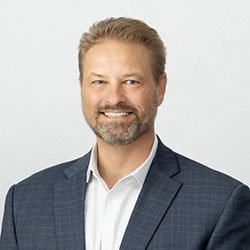Oilfield environmental companies used to focus on cleaning up what could be seen—oil spills, produced water leaks, oilfield sludge. And that’s still on the list. But today the focus is shifting to unseen, climate-related issues, including methane and carbon dioxide. Two companies are helping Permian Basin producers clean up those areas.
Helping Operators Profit from New Methane Standards
The EPA 4O Code of Federal Regulations, Part 6O, Subpart OOOO is generally abbreviated to just “Quad O.” What’s not being abbreviated are the standards for Quad O’s newest versions, Quad Ob and Quad Oc. These expand the ages of facilities whose methane and volatile organic compounds (VOC) emissions must be curtailed, subjecting violators to fines that can reach into the millions of dollars for large ongoing leaks.
Fortunately, says Cimarron Energy Vice President Burt Stringer, new technology can keep those leaks small and brief, which pays operators in two ways. First, it prevents thousands of dollars in fines. Perhaps more importantly, delivering that natural gas to market instead of letting it escape can bring in millions in revenue.
New Quad O regulations cover everything from the wellhead to downstream, and facilities of any age. Older versions only addressed newer installations, but as the EPA seeks to reduce overall methane emissions, it has decided to include all facilities, especially since older ones are among the most likely to leak.
Enforcement
Producers are required to do some of their own monitoring, with inspections—monthly, quarter, or semi-annually depending on the type of facility—Stringer said. But the EPA also is deploying satellites—two have been launched withing the last year, he said—equipped to detect methane leaks. Airplane flyovers are also being used.
Facilities operators have several monitoring options, said Stringer. Some use a fence line monitor at the edge of the location. Others also use imagery from airplanes and satellites.
There are two issues with the type and rarity of these tests. None of them can pinpoint the exact amount or spot of the leak, only that one is probably happening. In fact, satellites are mostly able only to detect what are defined as super emitter leaks, consisting of the release of 129 million standard cubic feet.
For any of these options, to identify the exact source and amount of a leak, ground crews must be dispatched with specialized sniffers and cameras. This determines who is emitting, the amount being emitted, and the amount of the fine.
As to the intervals… if, for example, a quarterly check reveals a leak at a facility, the EPA’s assumption—for fining purposes—is that it’s been leaking at the discovered rate since the last monitoring pass, unless the operator of the facility can prove otherwise. If the checkups are only done semi-annually, the assumption grows to six months, and so does the fine.
Of course, there’s no proof it was leaking that whole time either, the leak possibly starting five minutes before the observation. But that’s the rule. This could add up to tens of thousands of dollars in fines, part of the agency’s plan to make leaks painful enough that facilities operators will do everything it takes to prevent/repair them.
In fact, Stringer noted, technology is “part of the push with Quad Ob—they’re really encouraging operators and service providers to provide technology driven solutions that take some of the burden and costs off the operator, to be able to implement solutions.”
Sooner Is Better
Speaking of technology, Stringer said Cimarron offers autonomous, on-location LiDAR monitoring. This is a specialized camera on location 24/7. “It can pinpoint exactly where a fugitive emission is at, allowing you to identify it within minutes.” He added, “The operator gets a two-minute video snippet” showing the location. “This allows the operator to operate by exception and only go to where they have a problem.”
It Pays for Itself
Stringer notes that this technology has been available since 2O18, but only since the ramping up of Quad O has the industry been interested—even though it actually has the ability to pay large dividends in additional gas sales.
He said, “There is an Eagle Ford operator who, by deploying these technologies, saw a 22 percent increase in uptime and an 18 percent increase in utilization, allowing them to sell an additional $1.12 million in gas over one year. It also reduced their Scope 1 emissions. That $1.2 million in extra gas is based on $2.57, the average during that year.”
AI for the Future
Will there be a day when AI uses algorithms to monitor systems and automatically make changes in many situations?
Yes, says Stringer, and that could be as soon as 2O25.
“We’re actively working with BYU and the Department of Energy to do just that. We have some tests going on in the Eagle Ford, and in the Permian, where we have a camera trained on a flare that either automatically adjusts the operating conditions to stay within compliance or it can shut down and restart remotely. We have that same thing happening with vapor recovery, with another main missions control device where setpoints can be changed [and] units can be started ahead of time if it senses a production surge, to ramp up that VRU earlier than what the programming says, as you have a spike coming into the system.”
Carbon Now Captures Environmental Attention
For years, Milestone Environmental Services had provided disposal services for produced water, oil-based muds, and drill cuttings in the Permian Basin, Eagle Ford, and Haynesville regions. In recent years, as carbon dioxide has been added to the list of oilfield byproducts needing a final resting place, Milestone added carbon capture and storage (CCS) to their disposal services, said Chris Davis, senior vice president of Milestone Carbon.
“Expanding our services to include carbon sequestration is a natural extension of our capabilities and mission to clean up energy and heavy industry,” he explained. “Our clients are primarily large industrial manufacturing and energy infrastructure operators.
Carbon storage, to some extent, is already happening through enhanced oil recovery (EOR) procedures, he noted. “The Permian is a world leader in CO2 injection for enhanced oil recovery, which is one potential use for carbon emissions, and we have several great energy companies at the forefront of these activities. The market also needs players dedicated to pure waste disposal, or sequestration, and that is where Milestone is building its service offering.”
The Push to Sequester
The desire to be good neighbors is on the list of reasons companies are looking for CCS, but it’s on down the way. Topping the list are recent laws including the 2O22 Inflation Reduction Act, Davis said, along with new EPA rules.
“The EPA recently announced a new rule—Rule 111(d) under the Clean Air Act—which imposes higher emission standards for coal and natural gas-fired power generation. In the rule, the EPA acknowledges CCS as a viable technology for reducing carbon emissions from fossil fueled power plants and lays out a timeline for implementation,” he noted.
Davis said Milestone is working directly with fossil-fueled power plants and plant developers to make sure there is CO2 injection capacity as the grid expands.
The Process
As they do with slurry injection, Milestone receives and processes the waste “in a form suitable for deep injection into isolated rock formations for permanent disposal… We handle permitting, design, and construction, employing proven technologies and facility designs.”
Gathering CO2 in a liquid form known as “dense phase” will be done at Permian-based carbon hubs. It will come in by pipeline from existing gas processing plants and from new-construction gas-fired power generation plants. Other sources will include direct air capture (DAC) facilities.
Noting that many of the majors, including Oxy Permian, are investing in CCS themselves for EOR injection or use in Gulf Coast hydrogen production projects, but, “Many companies are simply looking for reliable carbon disposal to meet ESG or net-zero emissions targets. That’s where Milestone comes in.”
He stressed that all the company’s injection wells comply with stringent EPA Class VI design and monitoring standards.
CCS as Basic Environmental Stewardship
As worldwide carbon reduction goals continue to resonate, Davis said CCS will become more of the norm in the oil patch. “We see an emergence of sustainable infrastructure in the market to enable businesses to operate with reduced GHG emissions and greater transparency with community stakeholders on environmental performance. CCS will likely be one of many services that will be required to achieve these goals.”
In that process, allocating capital to CCS projects will become more of an issue—and exact decisions will vary by company. For Davis, “My plea is that leaders step forward to provide clarity for their organizations on this topic. In certain companies, we see teams excited about sustainable projects, only to find that there is not enough clarity on the value these projects bring both in terms of financial results and environmental performance. As more industrial firms set ambitious carbon reduction targets and clarify capital allocation to meet these targets, I believe the pace of CCS development will accelerate significantly.”
The stakes are rising for taming both types of emissions. Fortunately, technology is making strides at easing the burden. In the case of methane, taming emissions can actually be profitable in the marketplace, as well as simply avoiding fines. For CCS it’s almost all about regulations and ESG scores.
Paul Wiseman is a freelance writer in the energy industry.












